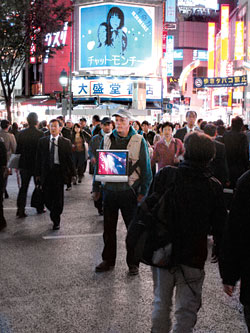By sheer coincidence, I stumbled across a very relevant article this evening about a new film that was to be aired tonight on Discovery Channel. The film is called Racing Extinction by Louie Psihoyos, the very same director of The Cove, with the Oceanic Preservation Society team, also from The Cove. While I was unable to view it tonight, I will most likely look into viewing it at some other point in time.
Similar to The Cove, this film includes a team of activists attempting to expose issues. This time, the film explores issues of endangered species and mass extinction, particularly due to climate change and the wildlife trade. The film explores This is quite a hot topic recently, and I’ve encountered it numerous times now, in my summer reading before freshman year, in various other readings in class, as well as a relevant lecture or two about extinctions as recent as last month.
The film hopes to inspire action by promoting activism. I wonder if this form of media presentation will actually be powerful enough to make true impacts.
http://www.forbes.com/sites/alliewilkinson/2015/12/02/marine-life-gets-major-screen-time-in-racing-extinction-airing-tonight/




